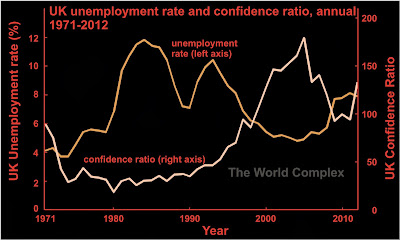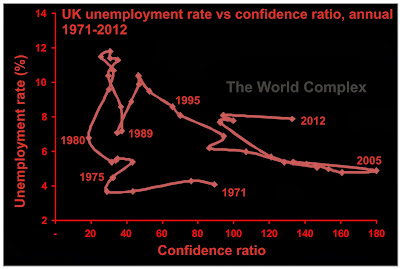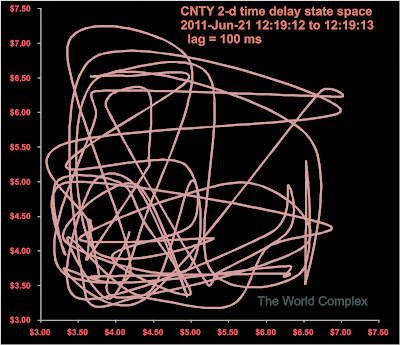It is the Christmas season, and I feel like giving someone a lump of coal.
Among the paeans delivered in honour of Pope Francis last week, there was a quote attributed to Richard Dawkins, to the effect that the pope was dangerous because he was nice. "We don't want nice men in the Vatican." I don't know why anyone wouldn't like that. We should have nice people everywhere. But I digress.
Dawkins is famous as an atheist. Here is a sample quote:
(As an aside, here's how I heard this. More than 20 years ago, as a grad student, I helped organize a series of seminars on evolution. The speakers included a biologist, but we also arranged other speakers including an anthropologist and a philosopher--there may have been a mathematician as well, but I don't remember. The anthropologist gave (IMO) a real eye-opening lecture about cultural development amongst the primates. The evolutionary biologists were extremely huffy about it--animals, they said, do not have culture. They do not develop new behaviours, and then propogate them to other individuals. It is impossible. Their every behaviour is hard-wired into them and all expressed behaviours have a survival benefit, even if we can't figure out what it is.)
The evolutionary biologist's view of faith, considering that it is endemic to nearly all human cultures, must be that it confers an evolutionary benefit, even if we don't immediately know what it is. We can guess, however. Humans are social animals. We need to survive as part of a group--not many can wander off into the woods by themselves and make all the tools needed to survive in isolation. A shared religion is one way for a group to maintain cohesion, and so faith may enhance the survivability of the group.
Faith may help the individual as well. Faith may be a small flickering candle next to the sun of reason; and in today's world, it certainly seems that the sun of reason is forever in the ascendant. It was not always thus, and in the past there were times when we would find ourselves in spiritual darkness. Perhaps the plague burned through my village, leaving me the sole survivor. Perhaps you and a young cousin managed to flee into woods before the neighbouring tribe massacred yours. Faith then is the sputtering candle that allows us to continue on through the darkness--to give us the resilience to go on when otherwise we may not.
I would question Dr. Dawkins's motives. Why should he care if people behave irrationally? What makes it his business? I rather suspect Dr. Dawkins believes that by promoting atheism he is Improving the World. If so, I believe this to be a big mistake on Dr. Dawkins part. For instance, Messrs. Hitler, Stalin, and Mao were all attempting to Improve the World. Moreover, many of the inventions that really did improve the world were developed by people who were not trying to Improve the World, but merely trying to Improve their Own Lives, which turned out to be not only a good idea, but a lot safer for everybody else.
Instead of improving the world, I think you are much better off trying to improve your own life, as well as those of your friends and family. It limits the damage. It is easy to see other peoples' irrationalities; harder to see your own. Naturally, I do not suggest this to Dr. Dawkins. He is free to do as he wills, just as I am free to award him a lump of coal this Christmas season. Perhaps he can use it to warm his heart.
Among the paeans delivered in honour of Pope Francis last week, there was a quote attributed to Richard Dawkins, to the effect that the pope was dangerous because he was nice. "We don't want nice men in the Vatican." I don't know why anyone wouldn't like that. We should have nice people everywhere. But I digress.
Dawkins is famous as an atheist. Here is a sample quote:
I think the effect of all religious faith is negative . . . I think that faith teaches you to believe something without evidence, and that shuts your mind off.It certainly sounds like he thinks religious people are irrational. But he overlooks a couple of key points. The first point is that people are irrational--it's part of the human condition. The second is an idea that really seems to be endemic to the field of evolutionary biology.
(As an aside, here's how I heard this. More than 20 years ago, as a grad student, I helped organize a series of seminars on evolution. The speakers included a biologist, but we also arranged other speakers including an anthropologist and a philosopher--there may have been a mathematician as well, but I don't remember. The anthropologist gave (IMO) a real eye-opening lecture about cultural development amongst the primates. The evolutionary biologists were extremely huffy about it--animals, they said, do not have culture. They do not develop new behaviours, and then propogate them to other individuals. It is impossible. Their every behaviour is hard-wired into them and all expressed behaviours have a survival benefit, even if we can't figure out what it is.)
The evolutionary biologist's view of faith, considering that it is endemic to nearly all human cultures, must be that it confers an evolutionary benefit, even if we don't immediately know what it is. We can guess, however. Humans are social animals. We need to survive as part of a group--not many can wander off into the woods by themselves and make all the tools needed to survive in isolation. A shared religion is one way for a group to maintain cohesion, and so faith may enhance the survivability of the group.
Faith may help the individual as well. Faith may be a small flickering candle next to the sun of reason; and in today's world, it certainly seems that the sun of reason is forever in the ascendant. It was not always thus, and in the past there were times when we would find ourselves in spiritual darkness. Perhaps the plague burned through my village, leaving me the sole survivor. Perhaps you and a young cousin managed to flee into woods before the neighbouring tribe massacred yours. Faith then is the sputtering candle that allows us to continue on through the darkness--to give us the resilience to go on when otherwise we may not.
I would question Dr. Dawkins's motives. Why should he care if people behave irrationally? What makes it his business? I rather suspect Dr. Dawkins believes that by promoting atheism he is Improving the World. If so, I believe this to be a big mistake on Dr. Dawkins part. For instance, Messrs. Hitler, Stalin, and Mao were all attempting to Improve the World. Moreover, many of the inventions that really did improve the world were developed by people who were not trying to Improve the World, but merely trying to Improve their Own Lives, which turned out to be not only a good idea, but a lot safer for everybody else.
Instead of improving the world, I think you are much better off trying to improve your own life, as well as those of your friends and family. It limits the damage. It is easy to see other peoples' irrationalities; harder to see your own. Naturally, I do not suggest this to Dr. Dawkins. He is free to do as he wills, just as I am free to award him a lump of coal this Christmas season. Perhaps he can use it to warm his heart.

































